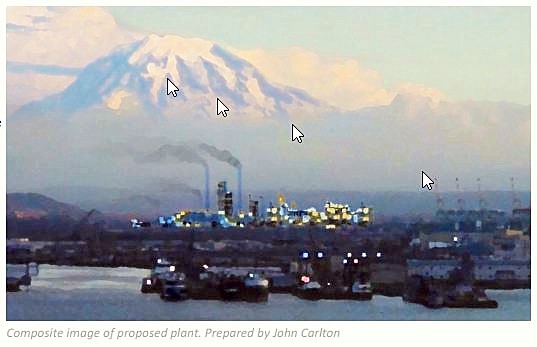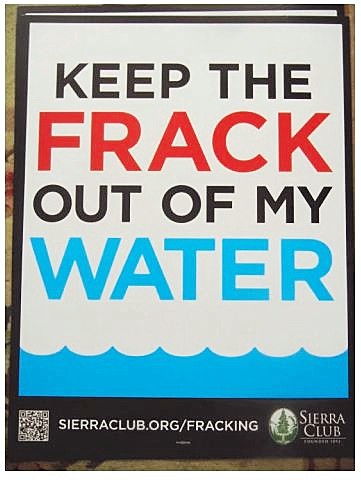By Dorothy Walker, Tatoosh Group Chair
 Northwest Innovation Works (NWIW) is proposing three new facilities in the Pacific Northwest to be located at the Port of Tacoma, the Port of Kalama and the Port of St. Helens to convert natural gas to methanol. The $3.4 billion gas-to-methanol plant at the Port of Tacoma is the largest plant proposed.
Northwest Innovation Works (NWIW) is proposing three new facilities in the Pacific Northwest to be located at the Port of Tacoma, the Port of Kalama and the Port of St. Helens to convert natural gas to methanol. The $3.4 billion gas-to-methanol plant at the Port of Tacoma is the largest plant proposed.
NWIW has signed a 30-year lease with the Port of Tacoma, which covers about 90 acres on the Blair Waterway and is now seeking permits from the Department of Ecology and Puget Sound Clean Air Agency. There are plenty of reasons to be concerned about the development of this plant.
Public comments due Feb. 17!
This project must go through a scoping period followed by the preparation of an environmental impact statement (EIS). That process may take over a year to complete. The lead SEPA/EIS agency is the City of Tacoma. Production is planned to begin in 2020.
The comment period for the scoping of the EIS is now, ending Feb 17. Please see Tatoosh Group Methanol Campaign for where and how to submit comments.
Chemical threats
Chemicals released by methanol facilities can pose a threat to public health and safety. Some of these chemicals and their potential impacts include:
Benzene irritates skin, eyes, nose, throat, causing coughing, wheezing, dizziness, headaches and lightheadedness. Long-term exposure can lead to leukemia and blood disorders.
Formaldehyde is also known to be a carcinogen, causing cancer in humans and affecting female fertility. Short-term exposure causes irritation to lungs, skin, eyes, nose and throat.
Naphthalene, a probable carcinogen, causes headaches, fatigue, nausea and vomiting.
Toluene affects the nervous system and may cause birth defects in a developing fetus.
Methanol is flammable and toxic to humans and other animals, causing nausea, vomiting, ocular injury, dizziness, headaches and muscle spasms.
 Water demands
Water demands
Another obvious concern regarding the proposed plant relates to its extreme water requirements. The plant would use between 10,000 to 20,000 gallons of fresh water per minute (5.2–10.4 billion gallons per year). This is about twice as much as the current residential water usage in Tacoma. Water used by the plant would come from Tacoma’s municipal water system most of which comes from the Green River. This raises alarm bells due to this summer’s drought, during which Tacoma residents were asked to conserve water.
Greenhouse gases and other environmental concerns
Based on information presented by environmental scientist, Wilma Subra, the proposed methanol facilities could release an estimated 578,000 tons of greenhouse gases per year.
As mentioned, Methane, one of the by-products of this process, is flammable and explosive. An explosion on the tide flats would endanger Tacoma residents and put first responders at risk.
The natural gas for this facility would be delivered via a lateral pipeline from Canadian and Bakken oil fields in North Dakota where it is extracted by hydraulic fracturing, a.k.a. “fracking”.
Sierra Club policy states that “fracking poses unacceptable risks to our communities, our environment and our climate. There is clear evidence that natural gas and oil extracted by fracking are major greenhouse gas contributors. Methane released via extraction and transport is 86 times more potent as a greenhouse gas than CO2 over a 20-year time frame.”
The Sierra Club Beyond Natural Gas Campaign warns against the exporting of natural gas: “The exporting of liquid natural gas (LNG) is dirty, dangerous and must be stopped. The natural gas industry is now looking for additional ways to profit from shale gas even if it means more fracking, more climate-disrupting pollution, and putting more sensitive areas at risk.”